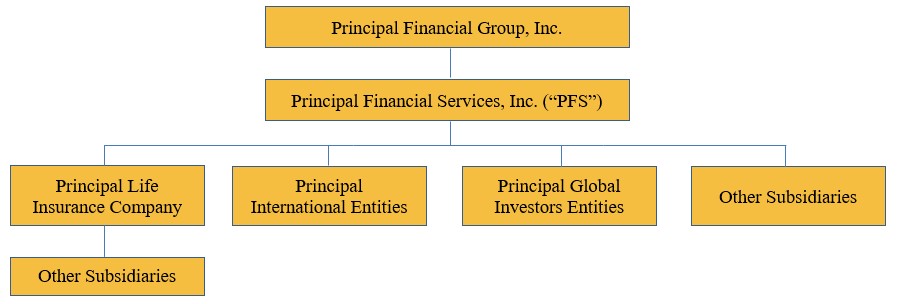Equity Risk
Equity risk is the risk we will incur economic losses due to adverse fluctuations in equity markets. As of March 31, 2023 and December 31, 2022, the fair value of our equity securities was $1,733.3 million and $1,708.6 million, respectively. We estimate a 10% decline in the prices of the equity securities would result in a decline in fair value of our equity securities of $173.3 million as of March 31, 2023, as compared to a decline in fair value of our equity securities of $170.9 million as of December 31, 2022.
We are also exposed to the risk that asset-based fees decrease as a result of declines in assets under management due to changes in investment prices and the risk that asset management fees calculated by reference to performance could be lower.
We also have equity risk associated with (1) universal life contracts that credit interest to customers based on changes in an external equity index; (2) variable annuity contracts that have a GMWB rider that allows the customer to make withdrawals of a specified annual amount, either for a fixed number of years or for the lifetime of the customer, even if the account value is reduced to zero; (3) variable annuity contracts that have a GMDB that allows the death benefit to be paid, even if the account value has fallen below the GMDB amount and (4) investment contracts in which the return is subject to minimum contractual guarantees. We are also subject to equity risk based upon the assets that support our employee benefit plans. For further discussion of equity risk associated with these plans, see Item 7. “Management’s Discussion and Analysis of Financial Condition and Results of Operations — Critical Accounting Policies and Estimates — Benefit Plans” in our Annual Report on Form 10-K for the year ended December 31, 2022.
We estimate an immediate 10% decline in the S&P 500 index, followed by a 2% per quarter increase would reduce our annual segment pre-tax operating earnings by approximately 5% to 8% over the next 12 months. The selection of a 10% unfavorable change in the S&P 500 index should not be construed as a prediction by us of future market events, but rather as an illustration of the potential impact of such an event. Our exposure will change as a result of changes in our mix of business.
Separate and distinct from our equity risk associated with a decline in the S&P index, we also have equity risk associated with certain alternative investments. These investments are comprised of several asset categories (including hedge funds, private equity, infrastructure and direct lending) that provide an attractive asset match to our long-dated liabilities and create diversification benefits to our fixed income investments. The risk profile of these investments is actively monitored by our Investment Committee and our corporate risk management function. Changes in the value of these investments will impact earnings. We estimate an immediate 10% decline in the value of those assets, followed by a 2% per quarter increase would reduce our annual segment pre-tax operating earnings by less than 8%. The selection of a 10% unfavorable change in the value of those assets should not be construed as a prediction of future market events, but rather as an illustration of the potential impact of such a decline in value of those assets.
Use of Derivatives to Manage Equity Risk. We economically hedge the universal life products, where the interest credited is linked to an external equity index, by purchasing options that match the product’s profile or selling options to offset existing exposures. We economically hedged the GMWB exposure, which includes interest rate risk and equity risk, using futures, options, treasury forwards and interest rate swaps with notional amounts of $1,615.8 million, $1,365.6 million, $4,265.1 million, and $1,661.2 million, respectively, as of March 31, 2023, and notional amounts of $1,451.6 million, $1,400.7 million, $4,280.1 million, and $1,818.0 million, respectively, as of December 31, 2022. The fair value of both MRBs and associated hedging instruments are sensitive to financial market conditions and the variance related to the change in fair value of these items for a given period is largely dependent on market conditions at the end of the period.
Item 4. Controls and Procedures
Disclosure Controls and Procedures
In order to ensure that the information that we must disclose in our filings with the SEC is recorded, processed, summarized and reported on a timely basis, we have adopted disclosure controls and procedures. Disclosure controls and procedures include, without limitation, controls and procedures designed to ensure that information required to be disclosed by us in the reports that we file with or submit to the SEC is accumulated and communicated to our management, including our Chief Executive Officer and Chief Financial Officer, as appropriate, to allow timely decisions regarding required disclosure.
Our Chief Executive Officer, Daniel J. Houston, and our Chief Financial Officer, Deanna D. Strable-Soethout, have reviewed and evaluated our disclosure controls and procedures as of March 31, 2023, and have concluded our disclosure controls and procedures are effective.
